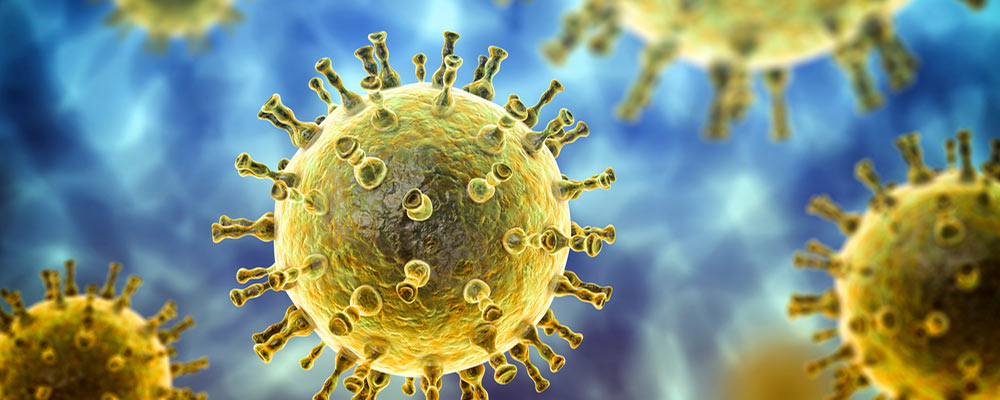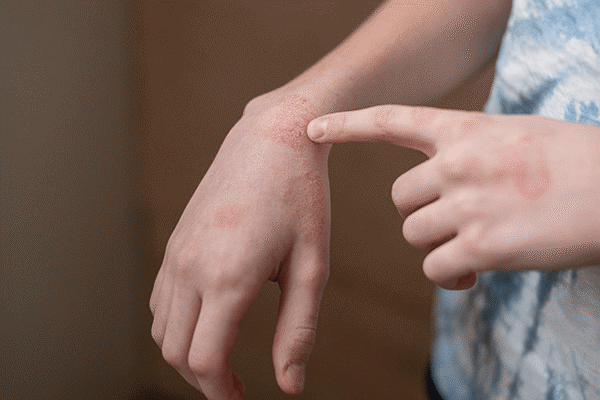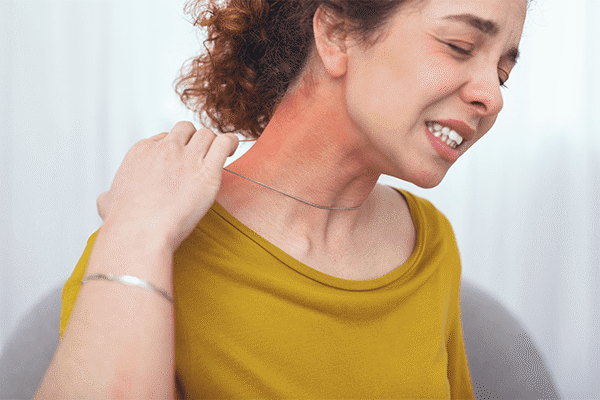Updated on August 13, 2025
Overview
Post-herpetic neuralgia [post-hur-PET-ik noo-RAL-juh] is a chronic pain condition that develops after Shingles (herpes zoster virus) has cleared. It is a debilitating and distressing condition that can hurt a person’s physical, emotional, and social well-being. Post-herpetic neuralgia treatment can help control its painful symptoms.
Anyone who has had chickenpox at any age is at risk of developing Post-herpetic neuralgia. Reactivation of the herpes zoster virus is most common in people who have a low level of immunity.
Shingles have infected nearly all Americans over the age of 40. One out of every three people in the United States will develop shingles at some point in their lives. Post-herpetic neuralgia affects 10% to 18% of people who get shingles. Revival Research Institute is conducting Postherpetic Neuralgia Clinical Trials to help researchers and doctors better understand the condition & find potential treatment options that may be able to help people suffering.
What Is Post-herpetic Neuralgia?
Post-herpetic neuralgia is a type of neuropathic pain that lasts for months or years after the herpes zoster rash has healed. Damage to peripheral and central neurons, and the immune/inflammatory response triggered by varicella-zoster virus reactivation may play a role. Patients with postherpetic neuralgia report a lower quality of life and interference with daily activities. The most common shingles complication manifests as a blistering, itching, and burning rash that heals over time.
What are Shingles?
Shingles (HZ) is a viral infection – long-dormant virus reactivating in the body can cause this infection. HZ only affects people who have had chickenpox because it is caused by the same virus that causes it. For a long time, a question remained, “Can you get shingles twice?”
The virus remains in nerve cells near the spine after a person has had chickenpox. If the virus is “reactivated,” chickenpox will never recur; instead, a condition far worse than chickenpox will develop that is Shingles.
Shingles is not a life-threatening disease, but it can be excruciatingly painful. The majority of people who get shingles only have one episode in their lifetime. However, you can get shingles twice or even more. Direct contact with the fluid from your rash blisters can spread to people who have never had chickenpox or have never received the chickenpox vaccine if you have shingles.
Vaccines can help to reduce the risk of shingles. Early treatment can help to reduce the duration of the infection and the likelihood of complications. Post-herpetic neuralgia is the most common complication, which causes shingles pain long after your blisters have healed.
What are the Symptoms of Post-herpetic Neuralgia?
Symptoms typically affect only a small portion of one side of your body. Among these signs and symptoms are:
- Pain, tingling, numbness, or burning,
- Touch sensitivity,
- A red rash that appears after the pain has subsided for a few days, and
- Itching from fluid-filled blisters that break open and crust over.
Some people also report:
- Fever and headache,
- Light sensitivity,
- Fatigue, and
- Pain is usually the first symptom of shingles. It can be intense for some. Pain can be misdiagnosed as a symptom of heart, lung, or kidney disease depending on where it is felt. Some people experience shingles pain but do not develop the rash.
The shingles rash appears as a stripe of blisters that wraps around either the left or right side of your torso. The rash of shingles can appear around one eye, one side of the neck, or one side of the face.
Because PHN is solely the persistence of pain after the herpes zoster virus has resolved, there are usually no visible features to aid in diagnosis; however, some people will have scarring and pigmentation from the rash despite post-herpetic neuralgia treatment.
Diagnosed PHN:
PHN is not diagnosed until the shingles rash heals, which takes approximately 2-3 months. If the individual is still experiencing similar but refractory pain at this point, he or she has most likely developed PHN. The rash, and thus the pain, will most commonly appear in the torso and can include any of the following pain sensations to varying degrees:
- Lancinating pain: this term refers to all types of sharp pains that we experience, such as jabbing, piercing, knife-like, cutting, or stabbing.
- Allodynia: an abnormal, unpleasant, and painful sensation that can occur in the rash’s location or in the surrounding area; burning pain, aching pain, spontaneous pain, and hyperalgesia (increased sensitivity to pain).
Some people will experience only one of the above symptoms, while others will experience a combination of them (such as background aching with spontaneous pain spikes throughout the day). Wearing tight-fitting clothing or being exposed to abrupt and intense temperature changes can help to alleviate pain in some cases. Unfortunately, even very light pressure, such as a gentle breeze or a brush of clothing, can cause intense pain in some people.
What causes Post-herpetic Neuralgia (PHN)?
Post-herpetic neuralgia (PHN) is caused by nerve fiber damage caused by shingles infection. Exaggerated pain signals are sent to your brain by nerve fibers in the affected area of your skin. Herpes causes post-herpetic neuralgia, which is nerve pain.
Shingles are caused by the varicella-zoster virus, which is the same virus that causes chickenpox. The virus that causes chickenpox remains in your body for the rest of your life, but it is dormant or “silent” for years. Shingles develop when the virus is reactivated. A small percentage of people who get shingles (20%) develop PHN.
Who Is Affected by Post-herpetic Neuralgia?
One in every five people who get shingles will experience these sharp, ongoing pains. Certain factors can boost your chances of getting it:
- Age: The likelihood of developing post-herpetic neuralgia increases with age. If you’re older and get shingles, you’re more likely to get PHN and have more severe pain than a younger person with shingles. Approximately 10% to 13% of people over the age of 50 who have had shingles will develop PHN. People under the age of 40 are rarely affected by PHN.
- Weakened Immune System: As you get older, your immune system weakens, allowing the dormant varicella-zoster virus to reactivate and cause shingles in some people. Cancer, chronic infectious diseases (such as HIV/AIDS), being an organ transplant recipient, and taking immune-suppressing medications are all medical conditions that can weaken your immune system, due to chemotherapy, immunosuppressant medicines, and steroids, or anti-organ rejection medicines.
- The Severity of your Shingles: If you have a severe rash, you are more likely to develop PHN.
- The Painful, Itchy, or Tingly feeling before Shingles Rash: If you had these symptoms in a skin area a few days before your shingles rash, you are more likely to develop PHN.
- Waiting to see your Doctor after a Shingles Rash: If you wait more than three days after your rash appears, you risk contracting PHN because you missed the window for antiviral treatment.
What are the Complications of Post-herpetic Neuralgia?
If you suspect shingles, call your doctor right away, especially if you are experiencing any of the following symptoms:
Herpetic neuralgia:
Some people experience shingles pain long after the blisters have healed. Post-herpetic neuralgia occurs when damaged nerves send cluttered and exaggerated pain signals from your skin to your brain.
Vision loss:
Shingles in or around the eye (ophthalmic shingles) can result in painful eye infections and vision loss.
Neurological issues:
Shingles can cause brain inflammation (encephalitis), facial paralysis, or hearing or balance problems depending on which nerves are affected.
Skin infections:
Bacterial skin infections can develop if shingles and blisters are not properly treated.
How is Post-herpetic Neuralgia Diagnosed?
The diagnosis of post-herpetic neuralgia (PHN) is usually based on your symptoms, shingles history, and physical examination. If you recently had shingles and are experiencing pain in the area where the shingles rash was, you most likely have PHN. Your doctor may order tests to ensure that your pain isn’t caused by something else, but in most cases, no further tests are required.
Post-herpetic Neuralgia Treatment Options:
PHN requires early treatment. Seeking medical attention as soon as shingles symptoms appear can greatly reduce the chances of developing neuralgia.
PHN can last for many years and is difficult to treat. Because PHN primarily affects the elderly, the safety and tolerability of pharmacologic therapies are critical considerations. Once PHN has been identified, the focus of post-herpetic neuralgia treatment should be on pain management and minimizing treatment-related side effects.
Medicines may not completely alleviate pain, but they can help. You may need to try a variety of medications to find the one, or combination of medications, that works best for you.
You are advise to try one of the antidepressant medications that also treat nerve pain.
Antidepressants:
The two most commonly prescribed antidepressants for post-herpetic neuralgia treatment are amitriptyline and duloxetine.
Typically, you’ll begin with a low dose and gradually increase it based on the benefits and side effects. It may take several weeks to notice the full impact.
Anticonvulsants:
The two most commonly prescribed anticonvulsants for post-herpetic neuralgia are gabapentin and pregabalin.
Like antidepressants used to treat post-herpetic neuralgia, they should be started slowly and gradually increased over a few days or weeks. Before they begin to work and show results, they must be consumed as per prescription for a few weeks.
Post-herpetic Neuralgia Creams and Plasters:
Your physician can prescribe medications that you can apply directly to the painful area.
If your pain is mild or you are unable to take antidepressants or anticonvulsants, your physician may recommend these treatments. If your pain is severe, your physician may prescribe them in conjunction with other medications.
– Plasters containing lidocaine
Lidocaine plasters are adhesive plasters containing a local anesthetic. They can be useful when pain interferes with sleep or daytime activity. They can only be used for 12 hours at a time.
– Cream with capsaicin
Capsaicin cream in low doses for nerve pain It has the ability to prevent nerves from sending pain signals to the brain.
It is applied to the affected area several times per day, but only after the rash has healed. It works by altering the function of nerve endings.
Shingles vaccine:
The FDA has approved a shingles vaccine, which can reduce your chances of getting shingles and PHN. The vaccine is administered in two doses, two to six months apart. The two-dose vaccine is 90% effective against shingles and PHN. Vaccination provides protection for at least four years.
The Shringrix vaccine is advised for healthy adults aged 50 and up. There is no upper age limit. You should get the vaccine even if you have:
- You have shingles.
- You’re not sure if you’ve had chickenpox (roughly 99 percent of Americans over the age of 40 have had chickenpox, even if they don’t remember getting it as a child).
- You have already received the Zostavax vaccine. This shingles vaccine is no longer available in the United States. Inquire with your doctor about the best time to get the Shingrix vaccine.
Consult your physician about the best time to begin Shingrix vaccination. But if you’ve never had chickenpox or have children who haven’t, getting the chickenpox vaccine (Varivax) can help you avoid getting it in the first place. You won’t get shingles or PHN if you never get chickenpox.
Apart from post-herpetic neuralgia treatment, there are some things you can do on your own to try to alleviate the pain of post-herpetic neuralgia.
- Wear comfortable clothing – cotton or silk clothing is less likely to irritate the skin.
- Cover your body – To protect the painful area, use cling film or a plastic wound dressing.
- Use cold packs – For some people, wrapping an ice pack in a towel and applying it to the affected area can help to cool the skin, but do not apply ice directly to the skin.
Prognosis:
Once the rash appears, it can last for up to three weeks, but it usually only lasts for two to three days. If the pain persists after the rash has healed, the person may be diagnosed with PHN.
Fortunately, for many people, PHN will be gone within a year. However, approximately 40% of PHN patients experience long-term pain.
Takeaway:
PHN is a painful and incapacitating condition that can impair patient function and quality of life. Health-care professionals play an important role in reducing the pain caused by PHN by conducting thorough assessments and early identification of the problem, recommending evidence-based pharmacologic modalities to manage the long-term pain of PHN, and monitoring patient adverse events, adherence to post-herpetic neuralgia treatment expectations, and responses to treatment in the elderly population most at risk.
There are several clinical trials near you in Michigan that can help you and countless others who are suffering from this condition. Through preventive measures and advanced treatment options, we hope to reduce the number of COPD cases.








